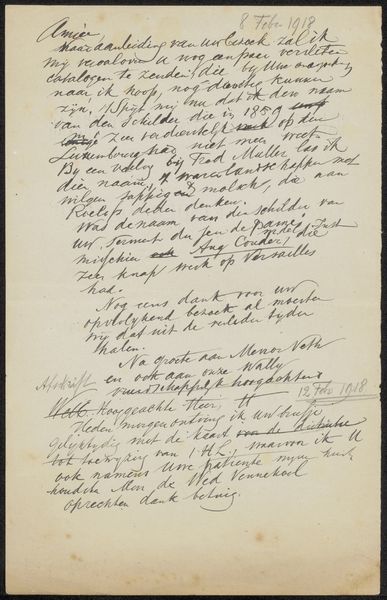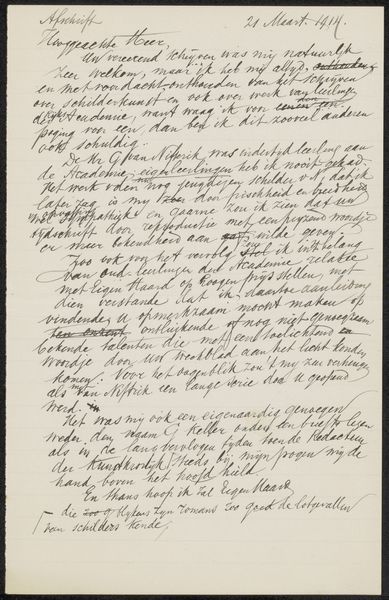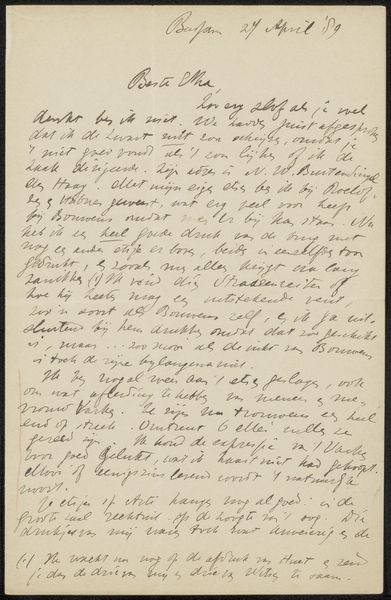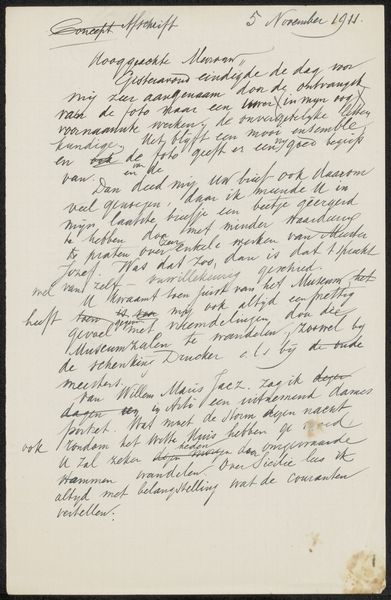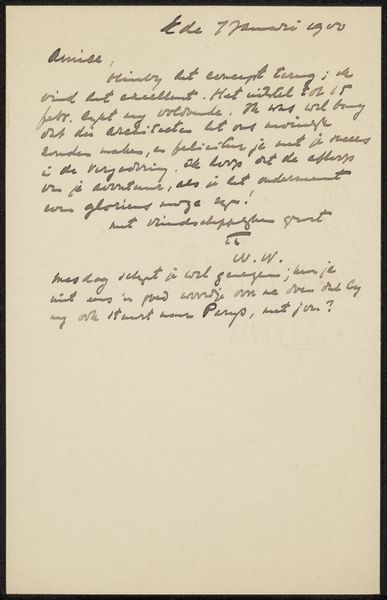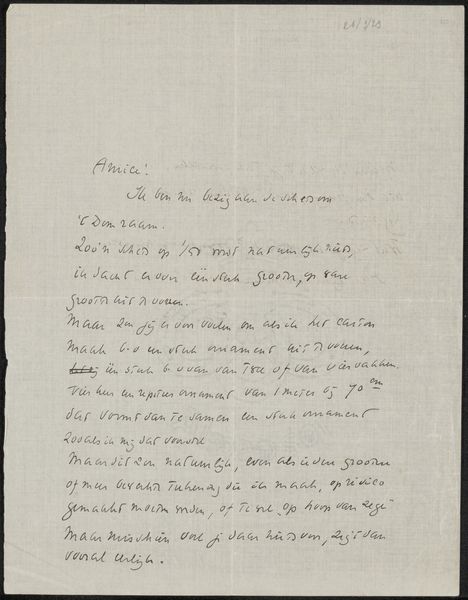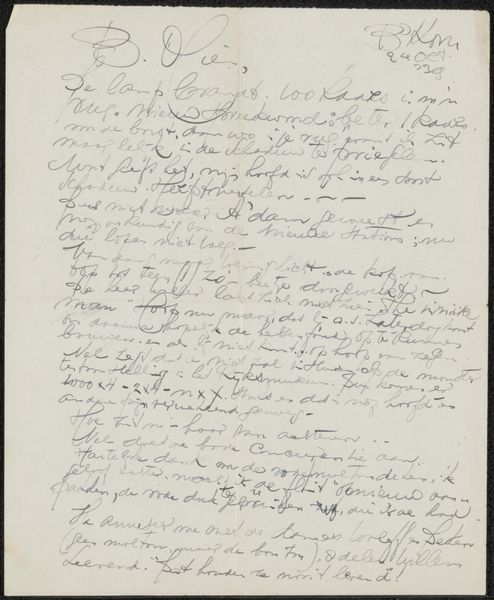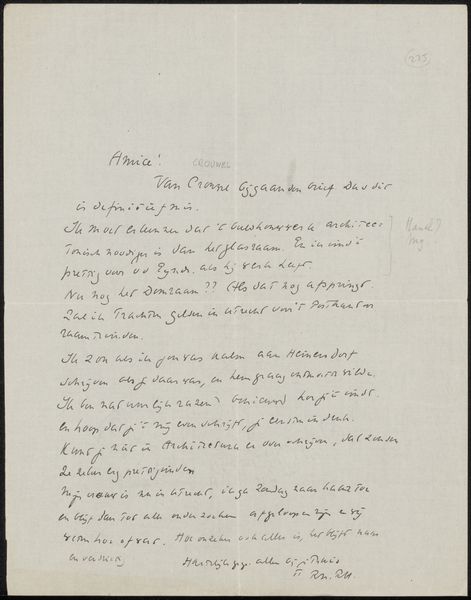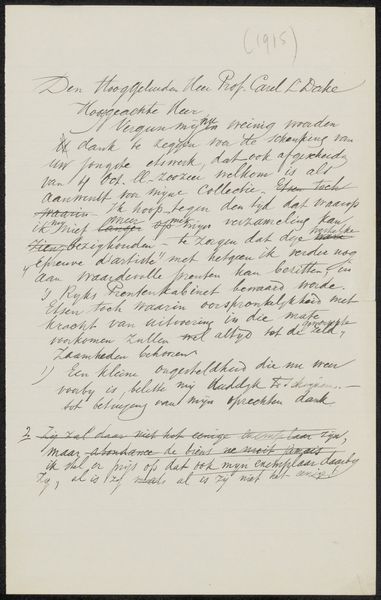
Brief aan Max Wilhelm Carl Weber en Anne Antoinette Weber-Van Bosse 1862 - 1927
0:00
0:00
drawing, paper, ink, pen
#
drawing
#
pen sketch
#
hand drawn type
#
paper
#
ink
#
pen work
#
pen
Copyright: Rijks Museum: Open Domain
Editor: This piece is called "Brief aan Max Wilhelm Carl Weber en Anne Antoinette Weber-Van Bosse," dating between 1862 and 1927 by August Allebé. It's a letter, ink on paper, currently held at the Rijksmuseum. The handwriting is dense, a bit challenging to read, and it gives the letter an intimate, personal feel. What do you see in this piece? Curator: It’s fascinating how handwriting itself functions as an emblem here. Consider how the act of physically writing a letter, choosing each word, becomes a performance of intimacy and care that's largely been replaced by faster, less tangible forms of communication. The cursive script connects us to a specific time, when this was the primary mode of conveying thoughts and feelings across distance. It invokes cultural memory. Editor: So, the style of writing is part of the meaning? Curator: Absolutely! The flourishes and pressure of the ink, the way the letters lean and connect – all of these are visual symbols that echo the emotional intent behind the words. Look at the salutation, "Waarde Heer en Marrom." That flourish communicates a certain level of respect, wouldn’t you say? Editor: Definitely! It also feels very formal. Is there something about the materiality, the ink and paper, that adds to this? Curator: Indeed. Ink on paper bears weight. Every choice, every stroke, every correction represents deliberation. This physical presence imbues the letter with an emotional and psychological depth that a typed message might lack. What do *you* make of it? Editor: I think I had underestimated the symbolic power of the handwritten. It brings the past much closer, making me feel more connected. Curator: Precisely. Recognizing these embedded codes allows us to unearth richer narratives hidden beneath the surface.
Comments
No comments
Be the first to comment and join the conversation on the ultimate creative platform.


